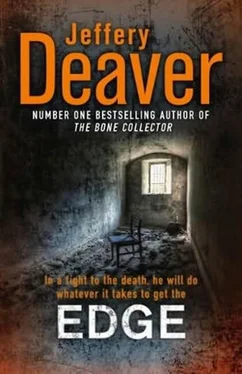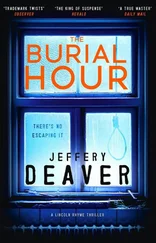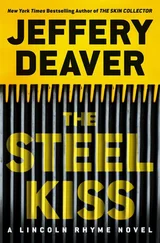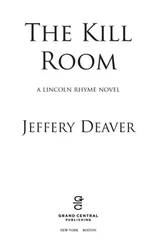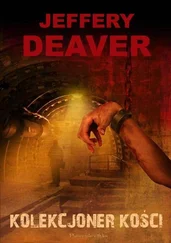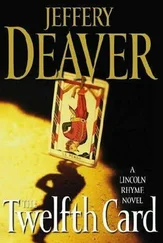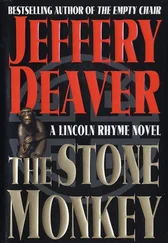I’d have to assume Loving was here.
Surveying the ground, I decided the logical route he’d have taken. I hopped a low stone wall meant to deter only the most stupid or nervous of animals and moved quickly along Loving’s path, which would be invisible to many people but was evident to me-because of an interest I’ve pursued for years.
In my twenties I was in Austin, Texas, finishing up yet another degree. I’d always loved hiking and, sick of the sedentary life of academia, I’d joined the orienteering club at the university. The sport, which originated in Sweden, is a competition in which you use a special map and a compass to navigate through wilderness you’ve never seen before, stopping at checkpoints to have a control card physically or electronically stamped. The first competitor to hit the “double circle”-the end of the route on the orienteering map-is the winner.
I fell in love with the sport-I still compete-and found it a welcome relief from the static hours in the classroom or in front of computers or poring through obscure texts.
During one meet in Austin I became friends with a fellow competitor, a Drug Enforcement Administration agent. He was a sign cutter-an expert at tracking people, mostly illegal immigrants and drug runners-and he got me interested in the subject. There’re no competitions in sign cutting, as with orienteering, but Border Patrol and DEA hold regular training sessions and he arranged for me to attend some.
Sign cutting was to me like some huge board game that you played outside, with yourself as a game piece. I fell instantly in love with it and when I wasn’t at orienteering competitions I would head outside and practice, tracking animals and hikers, who never knew they were being pursued. I even made a little extra money from the DEA on weekends, during their training sessions-I pretended to be a drug mule and tried to escape from sign cutting agents. I was pretty good, since I’d studied the techniques and knew how to cover a trail as well as find one.
The art had come in handy to me as a shepherd on a number of occasions.
I was using the techniques now, carefully scanning the ground and branches for indications of where Loving had passed. The signs were subtle: a sun-bleached branch upside down, pebbles or deer shit out of place, leaves where leaves shouldn’t normally be.
Sign cutting taught me that terrain determines the route the prey follows 90 percent of the time: you generally have only to follow the path of least resistance to be pretty sure of remaining on the trail of your target. Henry Loving was different. His route took him in directions that didn’t seem to make sense, less direct and more difficult.
But his strategy became logical when I realized that he was pausing repeatedly and turning to his left and right, presumably to look for pursuers.
Rational irrationality…
Now that I knew his strategy of taking the high, difficult ground and pausing, prepared to engage, I moved more quickly, since he wouldn’t expect someone to follow his exact route through the dense foliage. His path wove through patches of forsythia, dense blankets of kudzu and ivy, vines, brambles and brush whose pedigree I was unfamiliar with.
I paused to listen too. Dogs track by smell first, then sound and then sight. Humans are different but hearing comes second with them as well. Always listen and listen carefully. Your prey makes noise escaping and those preying upon you make noise moving in for the kill (humans tend to be the loudest approaching that climactic moment; other animals, the opposite). You’d think that snaps and rustling would seem to come from everywhere. But it doesn’t take long to learn to compensate for echoes, judge distances and know with more or less certainty where the source is located.
After a few moments I detected some faint snaps ahead of me. Maybe they were from branches clicking together in the increasing breeze, maybe a deer, maybe they were the footfalls of a man intent on kidnapping a sixteen-year-old girl.
Then, about a hundred yards away, near a body of water, I saw the outline of Carter’s house. I scanned carefully. No movement other than leaves stirred by taut wind.
Moving closer.
Pausing and scanning again.
I was two hundred feet or so from the house when I spotted Loving.
Yes, it was definitely the lifter. I caught a glimpse of his face. He was wearing the same clothes, or similar ones, as yesterday when we’d had our meeting at the flytrap. He wasn’t carrying his weapon; he was using his hands to move aside brush and branches as silently as he could. I’d hope to catch him on the path; he’d be less cautious there than at the house, where he would anticipate danger; he would have done his homework and learned that Bill Carter was a retired cop and surely armed.
Loving now drew his weapon and pulled back the slide slightly to make sure a round was chambered.
I drew mine as well and started after him.
I couldn’t help but think: What would Westerfield, or anybody, say if he were observing this? Wasn’t my job to get my principal, now hiding three hundred yards away, to safety as fast as I could?
Then why was I stalking the lifter?
There are herding dogs that move sheep around in a field and then there are herding dogs that both guard the flock and attack predators, however big and however numerous …
Sorry, Abe. I’m the second type. I can’t help it.
I narrowed the distance, debating my next strategy. I’d called Freddy from the road and knew there were officers and agents en route, running silent. Already local officers would be setting up roadblocks. Freddy’s ETA was probably twenty minutes.
This was a poor area to stage a one-on-one tactical assault and, though the ID was certain, I had no clear target presenting. Loving was in and out of shadows. A missed shot would be far too dangerous and not worth the risk.
And where was his partner?
I continued on. Once he was in the house, it would take him ten minutes to search all the rooms and realize that his edge had left and was not hiding in the obvious places.
I was moving closer, still under good cover and largely silent.
He approached the garage and looked in. He’d see Carter’s SUV inside. He eased into the bushes separating the building from the house itself. He crouched and moved along a low gray fence connecting the two structures. The foliage was high there and dense. It was hard to see his form but I could just make it out. Then I stopped, a twitching in my belly. If Loving continued another fifteen feet or so in the direction he was headed, he’d be in a clearing. And would present a perfectly backlit target.
I lifted my weapon and aimed where he’d appear. I was about eighty feet away. Not a particularly long distance for a powerful handgun like this-a.40 caliber. Even with the short barrel, a cluster would likely kill him. I remembered the training. Three shots high, three low. Move aside from where your muzzle flash would’ve registered and prepare to fire again. Count rounds expended.
He kept going. Ten feet to the break in the plants.
Then eight, then six…
I suddenly felt my heart rate increasing, my palms cooling from sweat.
Here was Henry Loving in front of me, nearly in my sights…
Two thoughts came into my mind: We have specific rules of engagement that require us to make a surrender demand unless we or someone else is in imminent danger. That rule applies to every hostile, even those who are armed and who are willing to use a sixteen-year-old girl’s screams to force her sobbing father to tell what he knows.
Even those who’d tortured and killed a good man like Abe Fallow.
But my second thought was: three high, three low, step aside, prepare to shoot again.
Читать дальше
